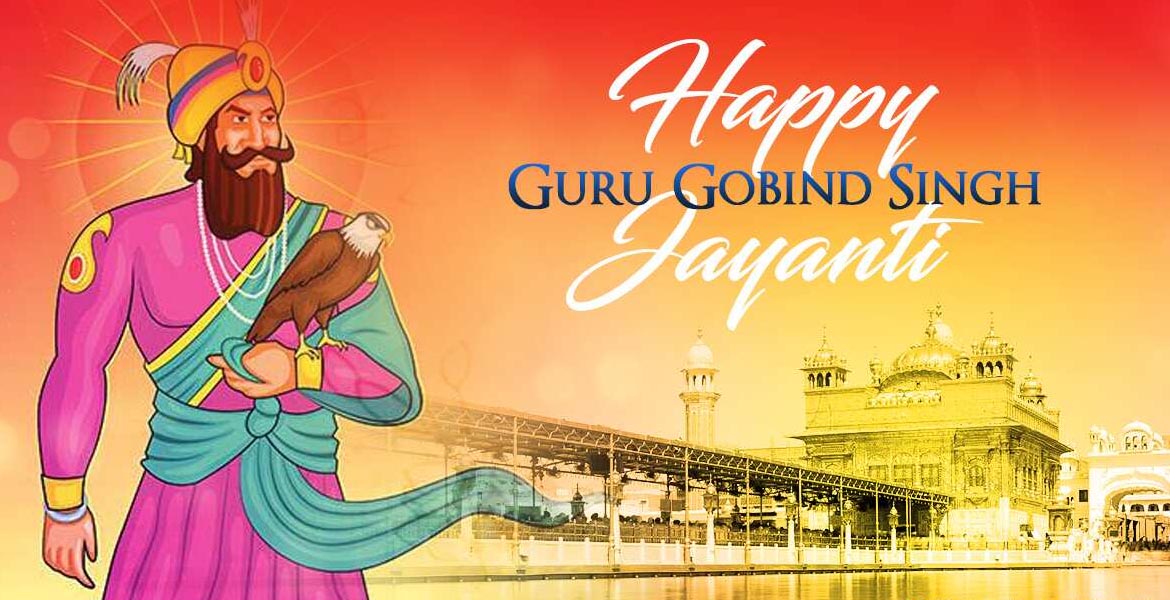Guru Gobind Singh Ji formed a Khalsa Panth and prepared a class that was always ready for the national interest. Khalsa means one who is pure of mind and action and who is devoted to society.
When the national light was covered with darkness, the everlasting light of the culture-sun became somewhat dim due to the constant incursions by foreign invaders and terrorists, the resistance and resistance of the non-aggressor forces became somewhat diluted. , When a religious sultan sitting on the throne of Delhi was stubborn and obsessed to paint the whole country in one color, When the rest of India, except for a few exceptions, started accepting that injustice and tyranny as their fate, then in such dark times, a personality emerged on the national plank, whose sacrifice and sacrifice, courage, and valor made the Mughals Sultanate. The tenon shook. Which laid the foundation of such a unique tradition, whose example is not found in world history. Whom we all know and respect with the names, surnames, and titles of the tenth Guru-Guru Gobind Singh Ji, Dashmesh Guru, Kalgidhar, Bajanwale, Sarbansdani, etc., are revered and revered in their deeds.
At that time, during the reign of Aurangzeb, atrocities on Hindus started increasing throughout India. This atrocity in Jammu and Kashmir and Punjab also crossed the limits of barbarism. A group of Kashmiri Pandits suffering from the atrocities of heretical rulers reached the court of Guru Tegh Bahadur with the plea that a condition was laid before them that if a great man does not accept Islam and sacrifice himself, they will not be forced to convert. At that time, at the young age of nine years, Guru Gobind Singh Ji told his father, 'Who can be greater than you!'To save those Kashmiri Pandits from the cruelty of Aurangzeb, Guru Tegh Bahadur gladly gave his sacrifice. After his sacrifice, Guru Gobind Singh Ji was appointed the tenth Guru of the Sikhs on the same day. Because of the cultural upliftment of the nation, Guru Gobind Singh Ji asked for the title of five disciples at a meeting of about 80,000 gurus at Anandpur Sahib on March 30, 1699, when the group of devotees presents there were stunned. In such a void environment, Lahore's Khatri youth Dayaram stood up.
Guru Ji held her hand and took her back to the tent. After a while coming back, Guruji while addressing the Sangat said, "And the head is needed".Again the same call of Guruji, this time on his call stood Mohkam Singh of Chhepa Samaj of Dwarka (Gujarat), then young man Sahib Chand of Bidar (Karnataka) and finally Jhivar Himat Singh of Jagannathpuri. There was no place for the joy and surprise of Sangat when Guru Ji brought out the five with full lion robes and decorated dastars (pagadis) and announced that this is my Panj Pyaar. Taking his symbolic sacrifice, Guruji laid the foundation of a new Khalsa Panth.
He gave a new formula to the Khalsa Panth, 'Vahe Guru Ji ka Khalsa, Vahe Guru Ji ki Fateh.' He gave the Khalsa a new surname of 'Singh', with five symbols - hair, bracelet, saber to get ready in every situation of war. , Wearing comb and briefs declared mandatory. Khalsa means one who is pure of mind, deeds, and words and who has a sense of dedication to society. Guru Gobind Singh Ji created a class of Khalsa sect, which was always ready for society and national interest. He embodied a great religious and social revolution by creating a class-less, varna-less, caste-inferior system.
Guru Gobind Singh Ji fought five major wars against the Mughals in his lifetime only on the strength of the brave heroes who did not retreat from his life - Battle of Bhangari in 1689, Nadaun war against Mughals in 1690, War of Anandpur Sahib in 1700, 1703 The historic 'Battle of Chamkaur' and the Battle of Muktsar in 1704. The Battle of Chamkaur is known for Guru Ji's unique battle skills and unwavering valor of Sikh heroes and unwavering faith in religion. In this war, only 40 Sikh heroes of a million Mughal army fighting under the leadership of Wazir Khan had rescued sixes.
Wazir Khan had come to catch Guru Gobind Singh Ji alive or dead, but the Sikh heroes, while showing unbeatable valor, shattered his plans. On October 7, 1708, Guru Ji got absorbed in the divine light at Nanded Sahib. Guruji left such a glorious tradition before Mahaprayana, which still runs in energetic blood in the arteries of the nation.
The trailing society of such great traditions well recognizes the provocative, separatist, anti-national voices who are conspiring to confuse or alienate them from this great heritage. Such insurgent-conspiratorial forces will not succeed in their intentions, as long as the sacred memories of this sacrificial tradition of gurus are located and alive in the hearts of all their followers and all countrymen.











Comment
No Comment Here